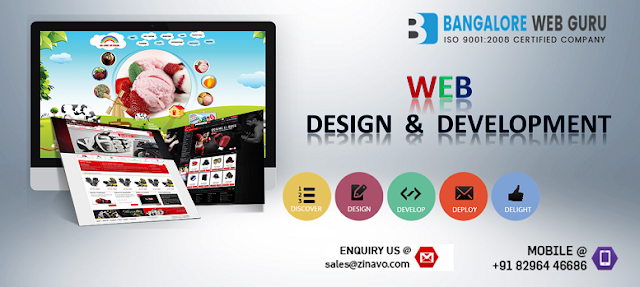Along with technical SEO and links, high-quality, interesting, engaging content is one of the three main pillars of any successful SEO strategy.
Traditional content strategies use blog posts, articles, images, and sometimes video as the main sources of content. And while those can be awesome for driving traffic and supporting your SEO efforts, podcasts are an often overlooked and underestimated medium. Podcasts can build your brand and drive direct traffic, while at the same time adding rich content to your site and supporting your link-building efforts.
Of course, you not only need to know how to leverage your podcasts for SEO, but also how to rank well on the platforms specific to podcasts. So whether you’re starting out or are an established podcaster, read on for specific tips on how to SEO your podcast.
It’s All in the Title
What does it take for your podcast to be found on iTunes and Google Play? It’s all in the title. The iTunes ranking algorithm for podcasts places a heavy emphasis on the title of the podcast, in addition to factors like total number of subscribers and the total number of reviews for the podcast.
What this means is that, while you want to have a title for your podcast which is compelling and interesting, you shouldn’t have a title which is so obscure or non-intuitive that it doesn’t explain in clear language what your podcast is about. Make sure to include your most important keywords in the title of your podcast. If your show is already established, you can do this by adding a subtitle. For example, if your show title is “A 5th Race Podcast,” and your show is about Stargate, you can make sure that you’re found by adding a subtitle such as “An Unofficial Stargate Podcast.”
That said, a generically keyword-rich title that is not distinctive or memorable is also a non-starter. The title of your podcast should be something you are proud of. (Note that with branded podcast names, it would be good to incorporate keyword-rich subtitles.) And while you do want to include keywords in your title and/or subtitle, don’t try to stuff your author tag with keywords. Apple will catch on and send you a note stating that your author tag isn’t representative of what your show is about.
Keep it clean, use the right keywords where it counts, and you should show up for relevant search queries. On Google Play, your show’s description (not individual episode descriptions) is searchable as well, so make sure you optimize it, while still keeping the copy interesting and compelling. (Speaking of keeping it clean, if your show has swear words and is thus labeled as explicit in iTunes, your podcast will not be reaching the very large Indian market.)
Optimizing Your RSS Feed
While the average user doesn’t use RSS nearly as much as in the past, your RSS feed syndicates your podcast on iTunes, Google Play Music and most other podcast platforms out there. Essentially, your RSS feed is what people are subscribing to when they subscribe to your podcast on any of these platforms.
Your feed is also what provides all your podcast information to these platforms. So when you want to update your show’s title or description, you have to update it in your RSS feed. It can take up to 24 hours for any of the fields to update on iTunes or other directories.
The best way to have SEO control over your podcast is by creating your RSS feed using the one that Libsyn provides you or the feed you get from the PowerPress plugin for WordPress (a free plugin).
Make sure you have a good, compatible RSS feed that won’t break or be too slow by using either castfeedvalidator.com or podba.se to validate your feed.
Leveraging Your Website
Yes, your podcast is an audio file, but that doesn’t mean that you can’t score SEO points by leveraging your website and making it a worthwhile destination for Google to send traffic to. As SEO practitioners, we are always trying to attract more trusted links to our sites. A great podcast is just one more type of content you can use to attract those links.
If a writer is looking at your site and considering linking to your podcast content, showing them other authoritative sites where your content has been featured can act as a “social proof” that your content is authoritative, high-quality and trustworthy, and thus worth linking to. For instance, you can show an “as seen on” section on at least your home page, but preferably on every episode page — the way I do on my biohacking/lifehacking podcast, “The Optimized Geek.”
Another easy way to boost your reach is to create supporting content that you want to expose search engines to. Some examples of content you can create are:
- Episode description or recap
- Show notes with timestamps
- Transcript
- Key takeaways
- Checklists/worksheets
- Episode art
The transcript will be a particularly text-rich piece of content to post to your site. Don’t just bury the transcript, feature it and present it nicely, so that users are more inclined to interact with it.
Each episode should have unique episode art so visitors have something to pin on Pinterest. Have a look at my wife’s show, “Stellar Life,” for an awesome example of the use of episode art:
Whenever possible, provide supporting content that drives listeners to your website. For example, on this episode of “The Optimized Geek,” I included multiple photos and videos on the episode page of me at my guest’s facility freezing my butt off in the cryotherapy chamber and then gnashing my teeth by doing the equivalent of a 350-pound bench press on the bioDensity machine.
Make sure each supporting content piece has a human-friendly URL, and include the link to each in your show notes. Remind your audience that if they’re using the Podcasts app, they can easily access the show notes by clicking on the podcast artwork in the player. Add your call-in number and contact email to the top of your show notes so your listeners can get in touch with you as well.
Recycling Content
Many of the tips featured in this article were pulled from a couple of episodes of my Marketing Speak podcast. Specifically, the one featuring Daniel J. Lewis (SEO Your Podcast to Grow Your Audience) and the one featuring Rob Walch (Podcasting 101: Creating a Successful Show). See what I did there?
Taking existing content and transforming it into another piece is a great way to leverage resources that you already have to boost your authority and improve your ranking on specific topics. You can take the content from your podcast and turn it into articles, blog posts, infographics, slide presentations, videos and so on to get even more SEO value from the recycled content.
That ‘other’ Search Engine: YouTube
YouTube, as you likely know, is the second most trafficked site on the web after Google, serving over a billion users. When considering any SEO strategy, but with podcast content in particular, YouTube should always be a part of your strategy. Not only is YouTube a huge search engine in its own right, but YouTube content frequently appears in the main body of Google search results as well.
There is no reason you can’t take your podcast recording and turn it into a YouTube video fairly easily. There are lots of file converters and video editing software which can translate your audio files into video. In fact, if you host with Libsyn like I do, then you can use their built-in Publish to YouTube feature (see screen shot). You can choose to either record actual video of the podcast participants as you do the podcast and use that video on YouTube, or overlay slides with your brand, interesting images, charts that support what the podcast is discussing at a particular time, and other contact information on top of the audio to create a video presentation.
Of course, YouTube/video SEO is a whole topic unto itself, but at the minimum, you should create an optimized title for your YouTube video, have a great description that includes a link to the show notes and episode page, and if possible, provide your own transcription of the podcast to override the YouTube auto-generated transcript, which is full of errors. Having an accurate transcript on your YouTube video isn’t just good for YouTube SEO, it’s great for those who aren’t native English speakers, because they can read the subtitles as your episode plays.
Podcasting for Link Building
Another way podcasting can benefit your overall search engine optimization efforts is through attracting links. If your podcast content is interesting, entertaining, compelling, useful and so on, it may well attract links all on its own, but there are certainly other links that you can pursue.
One of the easiest may be to get a podcast guest speaker to promote the podcast on their own site. If someone takes the time to be interviewed for your podcast, it’s quite likely they are going to want people to hear that podcast episode. By hosting the podcast’s episode page on your own site, in addition to syndicating it out on popular media and podcast platforms, you can give your guests a natural place to link to on your site.
One way to increase your odds is to look for podcast guests who might have a vested interest in promoting the episode because they will get a business benefit out of the increased exposure. These might include a company releasing a new product, perhaps even someone launching their own podcast, or an author promoting a new book. Authors are a particularly good target, as generally when they release a new book, they want any and every source of promotion they can find.
Make sure you talk to podcast guests beforehand about linking back to you, and ensure you follow up to make sure you actually scored that link. A great time to ask them for the link to post to social media is immediately before you start recording the interview. Get their verbal commitment, and you’ll get a much better outcome when you send them an email that the episode has posted and that you’d appreciate a link and some social mentions.
Incidentally, the reverse of the above can also be true. A podcast page on your own site is a completely valid and natural place to link back to the site of anyone participating in the podcast. If you are looking for or pitching people to participate in your podcast, if they understand the value of a link, that may be an additional inducement to close the deal.
For More Services Contact With Us :
Web Design Company Bangalore |
Website Design Company Bangalore |
Web Designing Company Bangalore |
Website Designing Company Bangalore |
Web Development Company Bangalore 




























